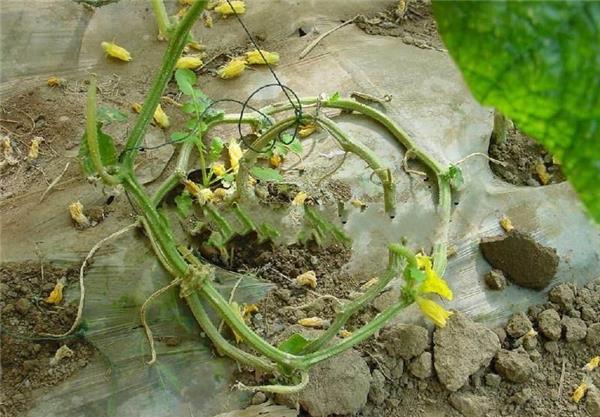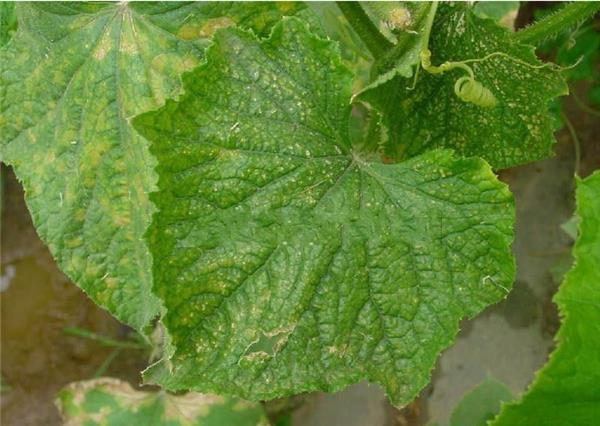How to control cucumber pests
Cucumber common diseases and insect pests are: downy mildew, blight, bacterial angular spot, scab, powdery mildew, anthracnose, Liriomyza huidobrensis, Fusarium wilt and vine blight, virus. Next, let's take a specific look at how to control cucumber diseases and insect pests.
1. Downy mildew and blight
To prevent downy mildew, 25 grams of ethyl phosphorus, aluminum, manganese zinc, 3 million units of streptomycin, 150g of sugar, 50g of urea and 150g of rice vinegar can be added into a mixed solution every 15 kg of water, once every 5-7 days.
Use aerosol: use 5% chlorothalonil aerosol, 100-180 grams per mu, 5-6 places, light the shed for the night in the evening, smoke once every 7 days, three times in a row.

Downy mildew and blight can also be controlled with 1000 times of 60% chlorpromazine, 72% urea manganese zinc, 72% DuPont Kelu wettable powder, 72% Kangling wettable powder, 58% metalaxyl manganese zinc, 75% chlorothalonil or 70% ethyl phosphine-manganese zinc wettable powder + synergist. Or 72% Shuangba wettable powder 700x liquid, 10% Kejia suspension 2500 times liquid, 52.5% Yikuangjing 2000 times liquid, 66.8% mildew dock 500,700 times solution spray control.
In the prevention and control of cucumber downy mildew, Pulek should be used cautiously to prevent drug damage.
2. Scab
Fuxing 8000 times liquid, 50% carbendazim 800x solution + 70% mancozeb 800x solution or 45% chlorothalonil smoke agent can be used for smoking, 200-250g per mu, even for 3-4 times.

3. Powdery mildew
1. Symptom
The disease mainly harms leaves. In the early stage of the disease, white round powdery spots appeared on the back and surface of the leaves, which became a piece after expansion, grew into a layer of white powdery matter, and gradually became grayish white, and the leaves withered and died after yellowing.
two。 Prevention and cure method
Fumigation and disinfection of protected land. Disinfect with sulfur powder or chlorothalonil smoke scavenger before planting. The method of fumigation with sulfur powder is 0.13 kg of sulfur powder and 0.25 kg of sawdust every 55 cubic meters. Such as using chlorothalonil smoke remover 250 grams per mu, put several places lit in the evening and sealed overnight, open the doors and windows the next morning for ventilation. You can choose 40% Fuxing EC 8000-10000 times, or 25% Fenru Ning wettable powder 1500 times, or agricultural antibiotic 120 biological preparation 100PPM, or 50% carbendazim wettable powder spray, alternate use, no 7-10 days once, continuous prevention and treatment for 2-3 times.
4. Bacterial angular spot
1. Technical symptoms of cucumber planting
The disease mainly harms leaves, but sometimes also harms stems and melons. The cotyledons were damaged, initially watery, round or oval sunken spots, producing needle-sized watery spots, then turning pale brown, triangular due to the limitation of leaf veins, white bacterial pus on the back of the leaves when the humidity was high, and a layer of white transparent film after drying. After that, it turned into a yellowish-brown spot and dried up. The plaque is brittle and easy to crack and perforate in the later stage. The disease spot on the stem and fruit is watery, nearly round, and then becomes light gray. Cracks often occur in the middle of the disease spot, and young melons often rot and fall early after being killed.

two。 Prevention and cure method
Seed disinfection, soak the seeds with 55 ℃ warm water for 15 minutes, or soak the seeds with 50% sulfamide 500x solution for 1 hour, or soak the seeds with 40% formaldehyde 150x solution for 105h, rinse with clean water and accelerate germination. In the early stage of the disease, spray 50% T800 times, or 70% can kill 400 times of wettable powder, 500 times of neostigmycin, or use 1 ludebao 500 times of Bordeaux, or 80% of Ludabao 500 times of wettable powder, once every 7 days for 3 times in a row.
Cucumber planting technology, detailed use of Saleford fertilizer in the cucumber planting process, you can see the relevant use instructions, generally increase production of more than 25%, but also can effectively prevent the occurrence of various pests, is the preferred fertilizer for pollution-free organic agriculture in the greenhouse.
6. Root-knot nematode of cucumber
Most of the root-knot nematodes were distributed in the soil layer at the depth of 30 cm, and the number of root-knot nematodes was the most in the tillage layer at the depth of 5-30 m. Generally, the soil with high dryness, loose air permeability and low salt content is the most suitable for nematode survival.
Less chemical fertilizer, more rotten farm manure and soil improvement are beneficial to reduce the occurrence of root-knot nematodes.
Medication: 300 times amente special irrigation around the root of each plant, according to the incidence of 7 days or 15 days of continuous root irrigation can effectively control root-knot nematodes.

7. Greenhouse whitefly
The suitable temperature for whitefly reproduction is 18-21 degrees Celsius, and the greenhouse whitefly migrates mainly from the open field through the tuyere in winter. After the damage of whitefly, it is easy to cause the leaves to turn green, and produce honeydew to pollute the leaves and fruit surface, and spread the virus disease under certain circumstances.
Potion: 1500 times Ruoshuitong + 1000 times amente, sprayed in the evening.
Related
- Wuhan Hospital Iron Tree Blooming Result Was Instantly Frightened by the Gardener Master
- Which variety of camellia is the most fragrant and best? Which one do you like best?
- What is the small blue coat, the breeding methods and matters needing attention of the succulent plant
- Dormancy time and maintenance management of succulent plants during dormancy
- Minas succulent how to raise, Minas succulent plant pictures
- What are the varieties of winter succulent plants
- How to raise succulent plants in twelve rolls? let's take a look at some experience of breeding twelve rolls.
- Attention should be paid to water control for succulent plants during dormant period (winter and summer)
- Watering experience of twelve rolls of succulent plants
- Techniques for fertilizing succulent plants. An article will let you know how to fertilize succulent plants.



